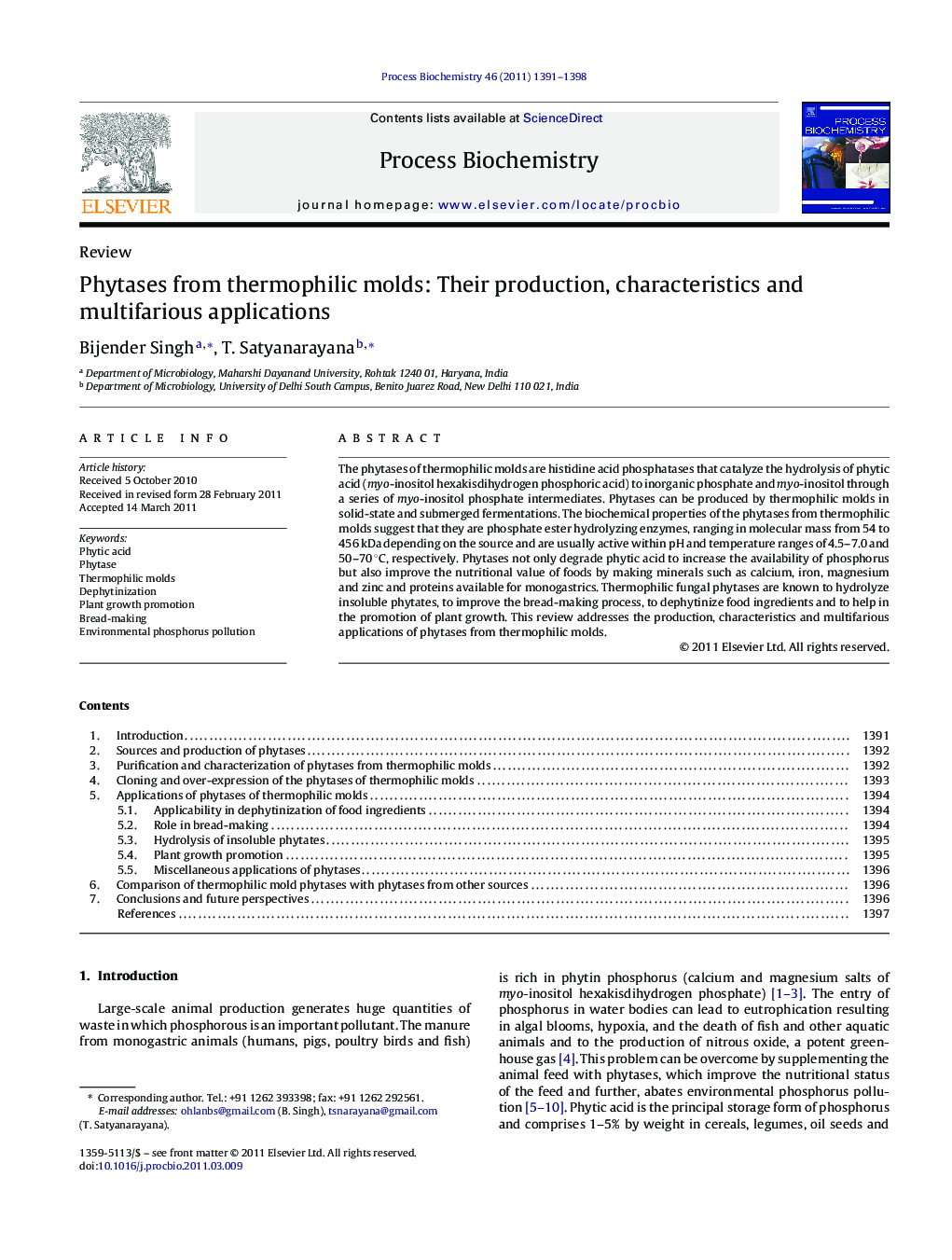| Article ID | Journal | Published Year | Pages | File Type |
|---|---|---|---|---|
| 34896 | Process Biochemistry | 2011 | 8 Pages |
The phytases of thermophilic molds are histidine acid phosphatases that catalyze the hydrolysis of phytic acid (myo-inositol hexakisdihydrogen phosphoric acid) to inorganic phosphate and myo-inositol through a series of myo-inositol phosphate intermediates. Phytases can be produced by thermophilic molds in solid-state and submerged fermentations. The biochemical properties of the phytases from thermophilic molds suggest that they are phosphate ester hydrolyzing enzymes, ranging in molecular mass from 54 to 456 kDa depending on the source and are usually active within pH and temperature ranges of 4.5–7.0 and 50–70 °C, respectively. Phytases not only degrade phytic acid to increase the availability of phosphorus but also improve the nutritional value of foods by making minerals such as calcium, iron, magnesium and zinc and proteins available for monogastrics. Thermophilic fungal phytases are known to hydrolyze insoluble phytates, to improve the bread-making process, to dephytinize food ingredients and to help in the promotion of plant growth. This review addresses the production, characteristics and multifarious applications of phytases from thermophilic molds.
